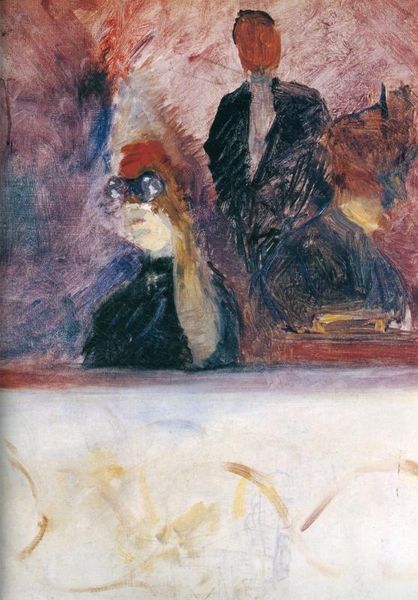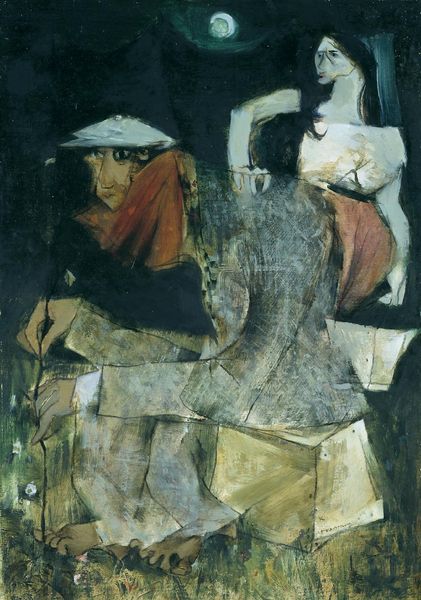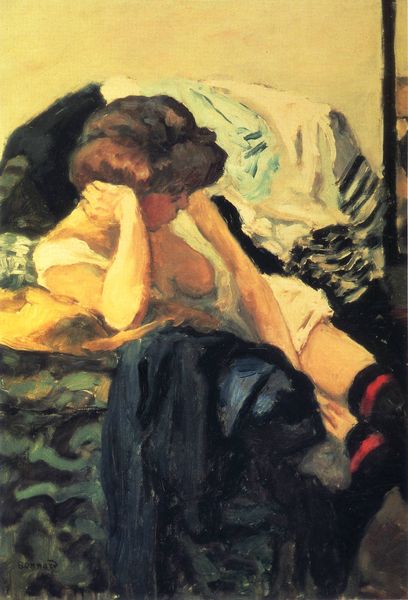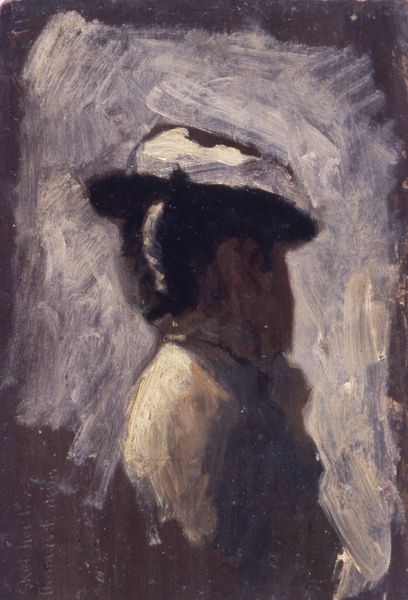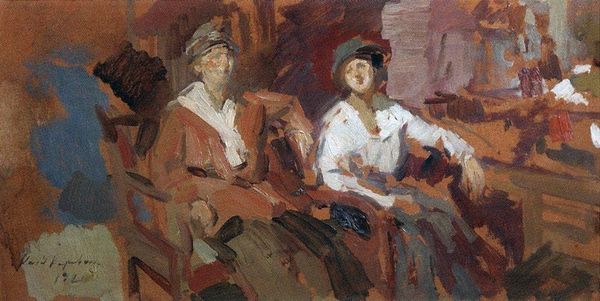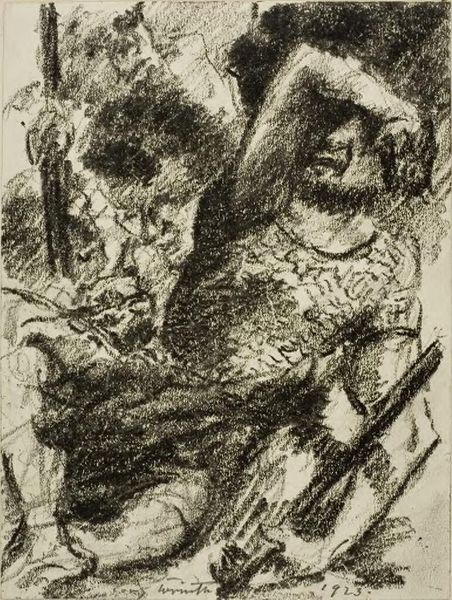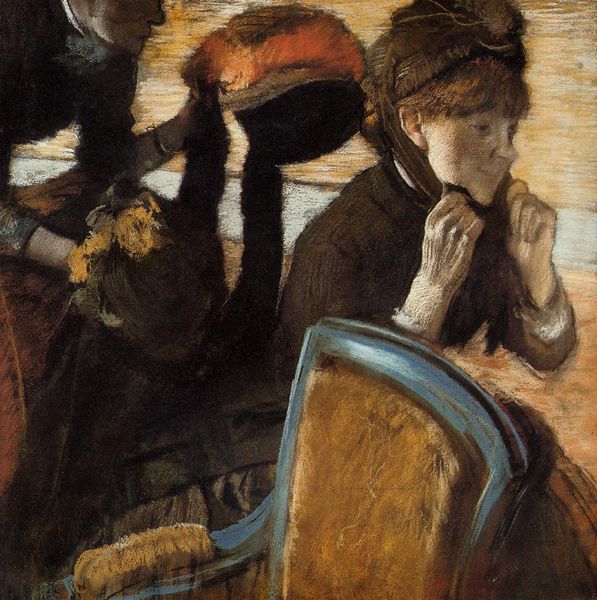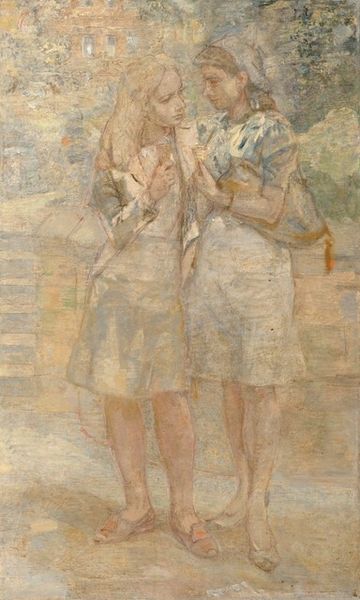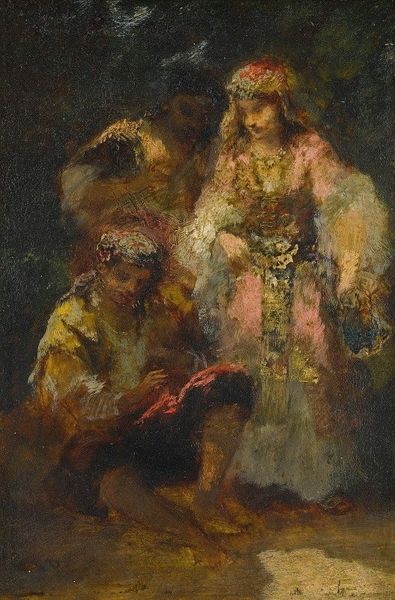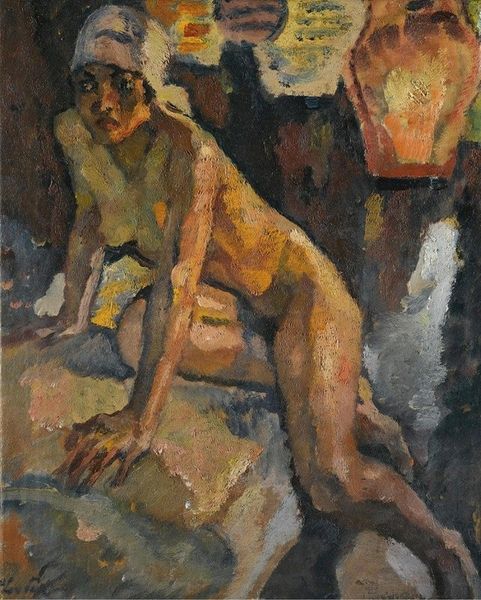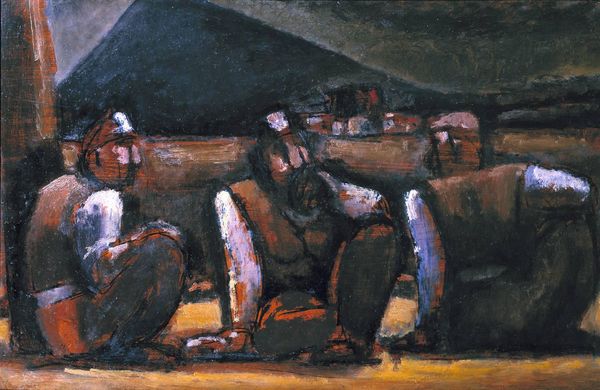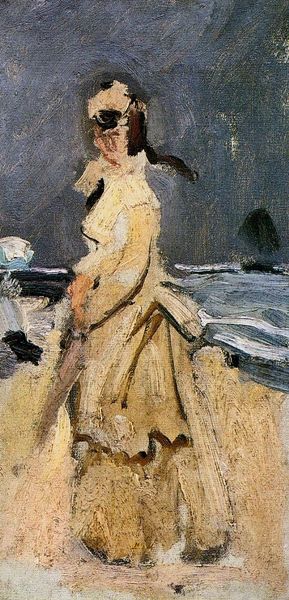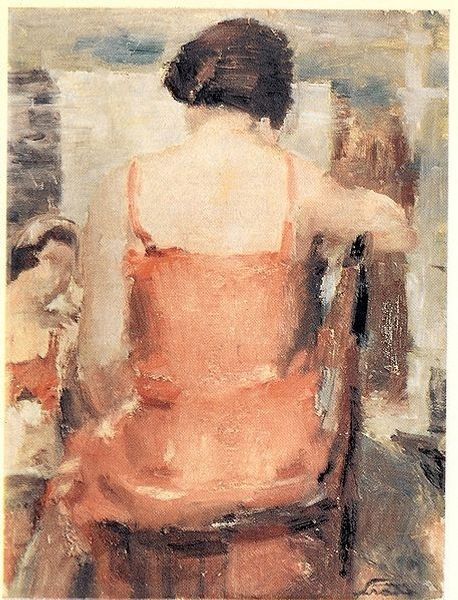
Copyright: Public domain
Editor: Here we have Romualdo Locatelli's "Street Musicians of Jakarta," painted in 1939 using oil paint. It has such a raw, almost unfinished quality. How do you interpret this work, considering its historical context? Curator: Well, it’s crucial to consider Locatelli's position as a European artist depicting Indonesian subjects during the colonial period. What looks like a charming snapshot of local life can also be seen as an appropriation, a visual capturing and framing of the "other." Editor: That’s a perspective I hadn’t fully considered. So, even seemingly innocent portrayals can perpetuate power imbalances? Curator: Precisely. The impressionistic style, while aesthetically pleasing, can romanticize poverty and obscure the socio-political realities these musicians likely faced. We need to ask: who is this painting really for? And what narrative does it reinforce about Indonesia? Editor: I see your point. The figures seem somewhat anonymized by the loose brushstrokes, losing individual identities perhaps. Is this a common theme within post-colonial criticism? Curator: Yes. It connects with the larger critique of the male gaze, where subjects are rendered passive, picturesque, devoid of agency. Does the vibrant palette distract from the possible exploitation inherent in the situation depicted? Does it humanize these subjects or further exoticize them? Editor: It’s made me reconsider how I view such works. I'll definitely research Locatelli and colonial representation in more depth. Thank you! Curator: Likewise. It's a reminder that art doesn't exist in a vacuum, but rather, participates in ongoing dialogues about identity, power, and representation. Keep questioning.
Comments
No comments
Be the first to comment and join the conversation on the ultimate creative platform.

